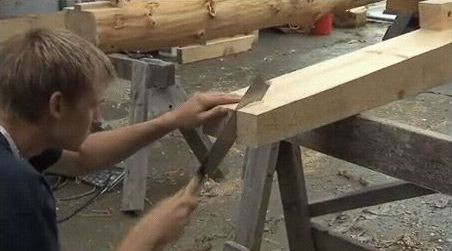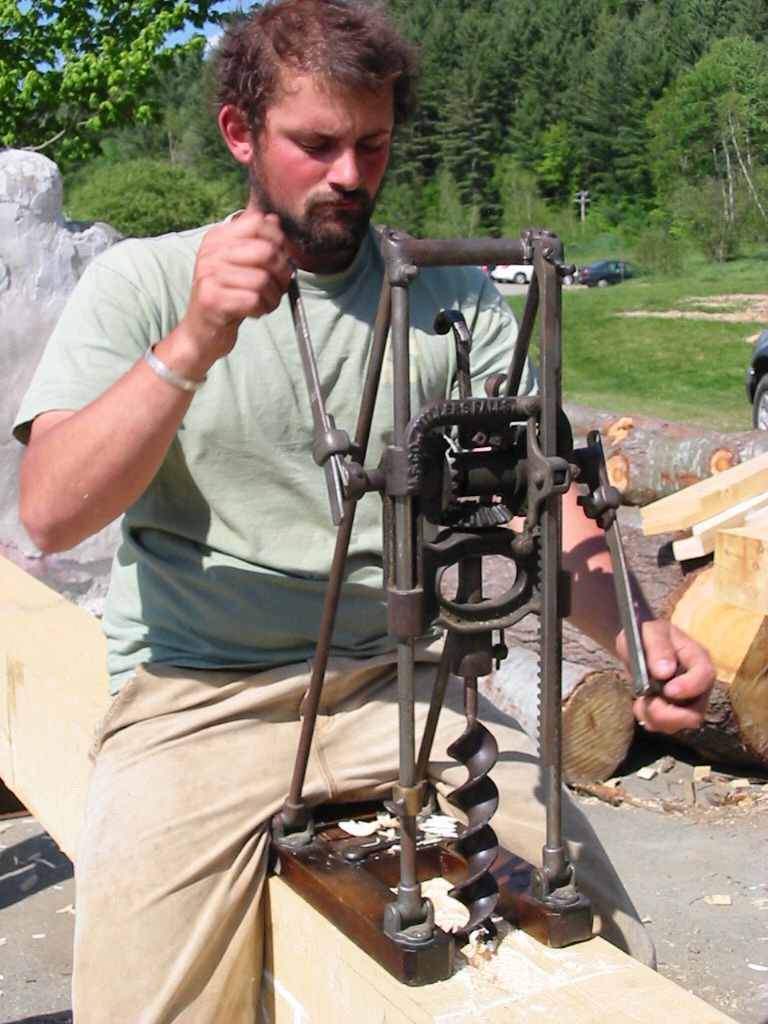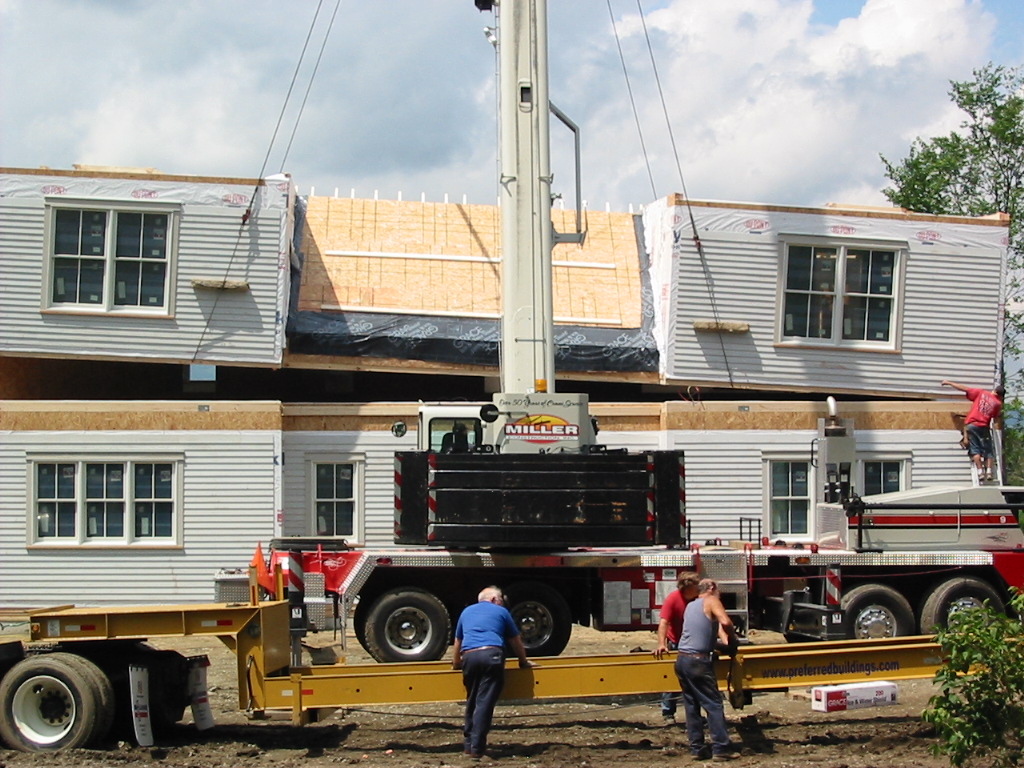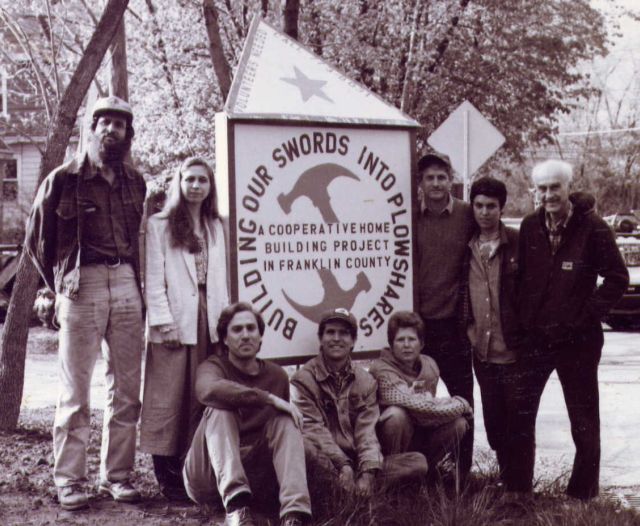Blog Post
Is our approach to green building an "appropriate technology"?

Almost every technological "solution" has created a new set of problems which it was assumed would be solved by further advances in technology. How is green building different?
[Editor's note: Robert Riversong, a Vermont builder, continues his 10-part series of articles taking design and construction to what he sees as radical or "root" concerns. Enjoy--and please share your thoughts. – Tristan Roberts]
4. Methods – criteria for appropriate technology
If the "bricks and mortar" are the ingredients of our buildings, then the rest of the recipe is about how best to assemble, mix and "bake" those ingredients into an integrated whole that is delicious, wholesome and nourishing. As with most vocations, architecture has evolved into a professional specialization more resembling the master chef than the kitchen cook--with the emphasis more on "delicious" than on wholesome and nourishing.
Since the start of the Age of Reason (also euphemistically called The Enlightenment), we have associated "progress" with the advance of science and technology. And, as with any evolutionary progression, it became continuously more elaborate and complex – but without the harmonizing guidance of Gaia and with no comparable human oversight or vision. It became a dogma of modern life (and advertising) that "new" was always "better."
Unintended Consequences
Because of this lack of forethought and vision, almost every technological "solution" created a new set of problems which it was assumed would be solved by further advances in technology.
This is what has come to be known as the law of unintended consequences, as detailed in Edward Tenner's 1997 book Why Things Bite Back: Technology and the Revenge of Unintended Consequences. And this is precisely the problem that Einstein identified when he famously said "Problems cannot be solved by the same level of thinking which created them."
SUPPORT INDEPENDENT SUSTAINABILITY REPORTING
BuildingGreen relies on our premium members, not on advertisers. Help make our work possible.
See membership options »
"The chief cause of problems is solutions."– Eric Sevareid (CBS news journalist from 1939 to 1977)
Appropriate Technology
But, at the start of the environmental movement, a few visionaries challenged the dominant paradigm of "value-neutral" technology with the idea of "appropriate technology." Perhaps the simplest definition is this: appropriate technology is being mindful of what we're doing and aware of the consequences. Grounded in the village self-sufficiency philosophy of Gandhi, British economist Fritz Schumacher's book Small is Beautiful – Economics as if People Mattered (1973) was considered one of the 100 most influential books published since WWII, and he is considered the father of the appropriate technology movement. Buckminster Fuller (1895–1983), best known for his invention of the geodesic dome, is one of its more prominent practitioners. And Stewart Brand, editor of the Whole Earth Catalog, was seminal to the advancement of the movement. 
A more complete definition of appropriate technology is materials and methods that are amenable to the environmental, ethical, cultural, social, political, and economic facets of the community it is intended for, that require fewer resources, are easier to maintain, and have less of a social or environmental impact. In other words, it is the simplest level of technology that can effectively achieve the intended purpose in a particular location.
Simplicity and Forbearance
Perhaps the most infamous practitioners of appropriate (or, as Schumacher called it, intermediate) technology are the Amish. While they don't completely eschew modern machines, the primary criterion these simple-living but highly successful people use to determine what is OK is whether it might disrupt the most important thing they have: family and community relationships.
America's premier agrarian philosopher, Wendell Berry, uses similar criteria in choosing tools:
1. The new tool should be cheaper than the one it replaces.2. It should be at least as small in scale as the one it replaces.
3. It should do work that is clearly and demonstrably better than the one it replaces.
4. It should use less energy than the one it replaces.
5. If possible, it should use some form of solar energy, such as that of the body.
6. It should be repairable by a person of ordinary intelligence, provided that he or she has the necessary tools.
7. It should be purchasable and repairable as near to home as possible.
8. It should come from a small, privately owned shop or store that will take it back for maintenance and repair.
9. It should not replace or disrupt anything good that already exists, and this includes family and community relationships.
Efficiency and Effectiveness
However, we builders have increasingly exported the tools and techniques of industrial manufacturing to the job site, with the assumption that speed is the same as efficiency, and that efficiency means completing more work in less time to maximize profit. To further increase building efficiency, we have outsourced some – or a lot – of the work to those very factories which we have mimicked: engineered trusses and joists, pre-fabbed foundation or wall sections, SIPs, or modular homes.
If efficiency means creating the desired output with the minimum inputs, then to match methods to goals first requires a clear delineation of the goals of a building project. It's the same with any journey: if we don't know where we're heading, then we're likely to end up there.

Alice asked the Cheshire Cat, "Which road do I take?""Where do you want to go?" said the cat.
"I don't know," Alice answered.
"Then" said the cat, "it doesn't matter."
If our goal is to not only build a delicious and wholesome house but also to build a sustainable world, then how we get there is at least as important as where we end up – for the means informs and determines the ends.
At an Amish barn-raising or a community building project, the rhythmic percussion of hammers and the rasping swish of handsaws are mixed with the patter of unhurried conversation. Times to refresh and enjoy social interaction are considered just as important as work time. While leadership is valued, hierarchy and power is unnecessary. Both the tools employed, the process undertaken, and the relationships maintained are based more on conviviality than on mass production. 
Conviviality
In his iconoclastic 1973 book, Tools for Conviviality, priest, philosopher and social critic Ivan Illich spoke of the need to develop new instruments for the re-conquest of practical knowledge by the average citizen and tools that could be developed and maintained by a community of users. And he emphasized the importance of scale: "When an enterprise grows beyond a certain point on this scale, it first frustrates the end for which it was originally designed, and then rapidly becomes a threat to society itself."
Small-scale, local, decentralized, empowering, low-impact, appropriate to the community's goals--these qualities of a wholesome and nourishing method, process or practice are very similar to the qualities of a sound, healthy and durable material.
"Though this be madness, yet there is method in't."– Polonius in an aside in Shakespeare's Hamlet
The full 10-part series of Robert's reflections will be as follows. Tune in next week for more:
1. Context – land, community & ecology
2. Design – elegant simplicity, the Golden Mean
3. Materials – the Macrobiotics of building: natural, healthy and durable
4. Methods – criteria for appropriate technology
5. Foundations – it all starts here: how do we begin?
6. Envelope – shelter from the storm, our third skin
7. HVAC – maintaining comfort, health and homeostasis
8. Energy & Exergy – sources and sinks
9. Hygro-Thermal – the alchemy of mass & energy flow
10. Capping it All Off – hat & boots and a good sturdy coat

copyleft by Robert Riversong: may be reproduced only with attribution for non-commercial purposes
Robert Riversong has been a pioneer in super-insulated and passive solar construction, an instructor in building science and hygro-thermal engineering, a philosopher, wilderness guide and rites-of-passage facilitator. He can be reached at HouseWright (at) Ponds-Edge (dot) net. Some of his work can be seen at BuildItSolar.com (an article on his modified Larsen Truss system), GreenHomeBuilding.com (more on the Larsen Truss), GreenBuildingAdvisor.com (a case study of a Vermont home), and Transition Vermont (photos).
Published May 25, 2011 Permalink Citation
(2011, May 25). Is our approach to green building an "appropriate technology"?. Retrieved from https://www.buildinggreen.com/news-article/our-approach-green-building-appropriate-technology



Add new comment
To post a comment, you need to register for a BuildingGreen Basic membership (free) or login to your existing profile.